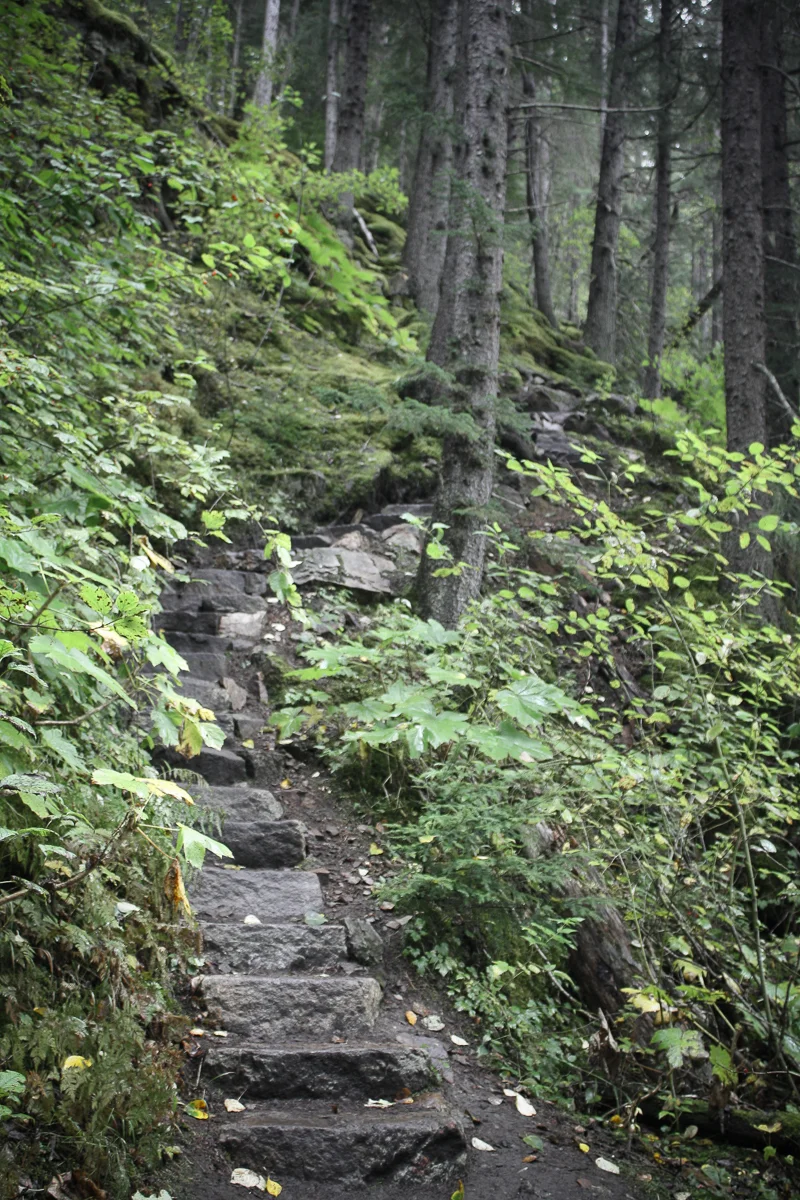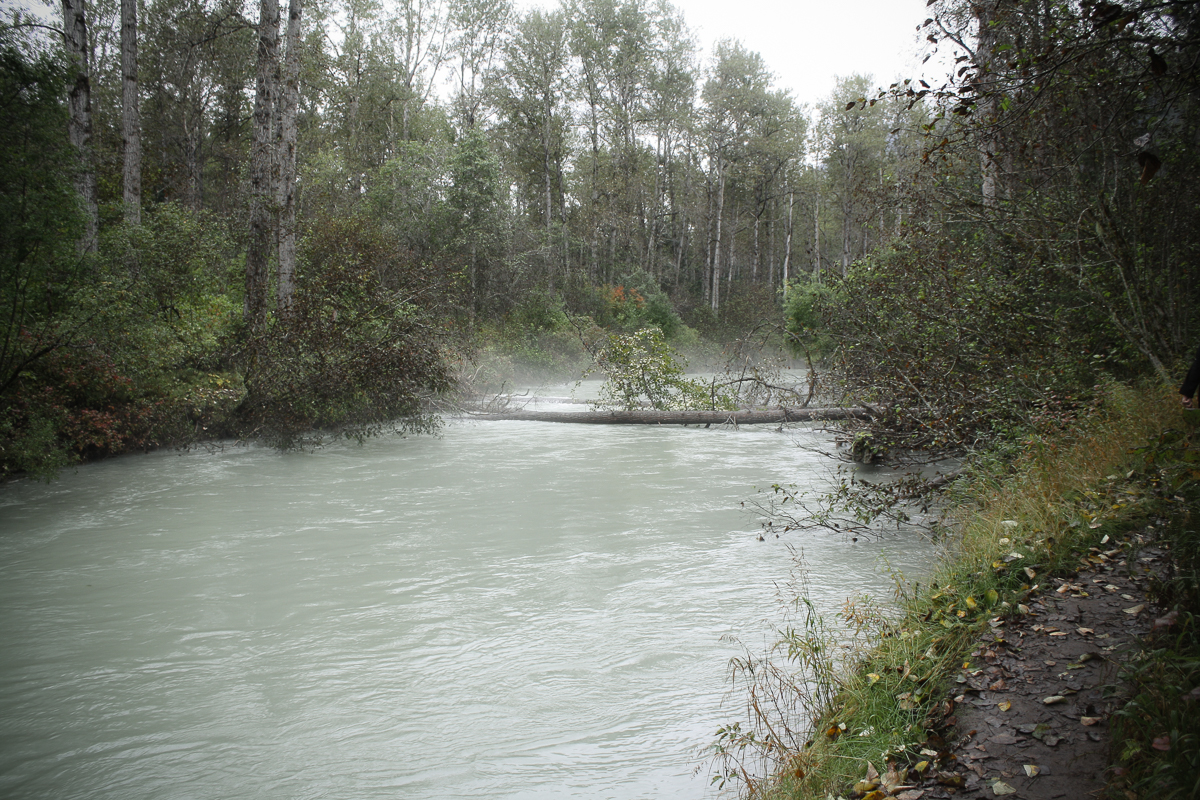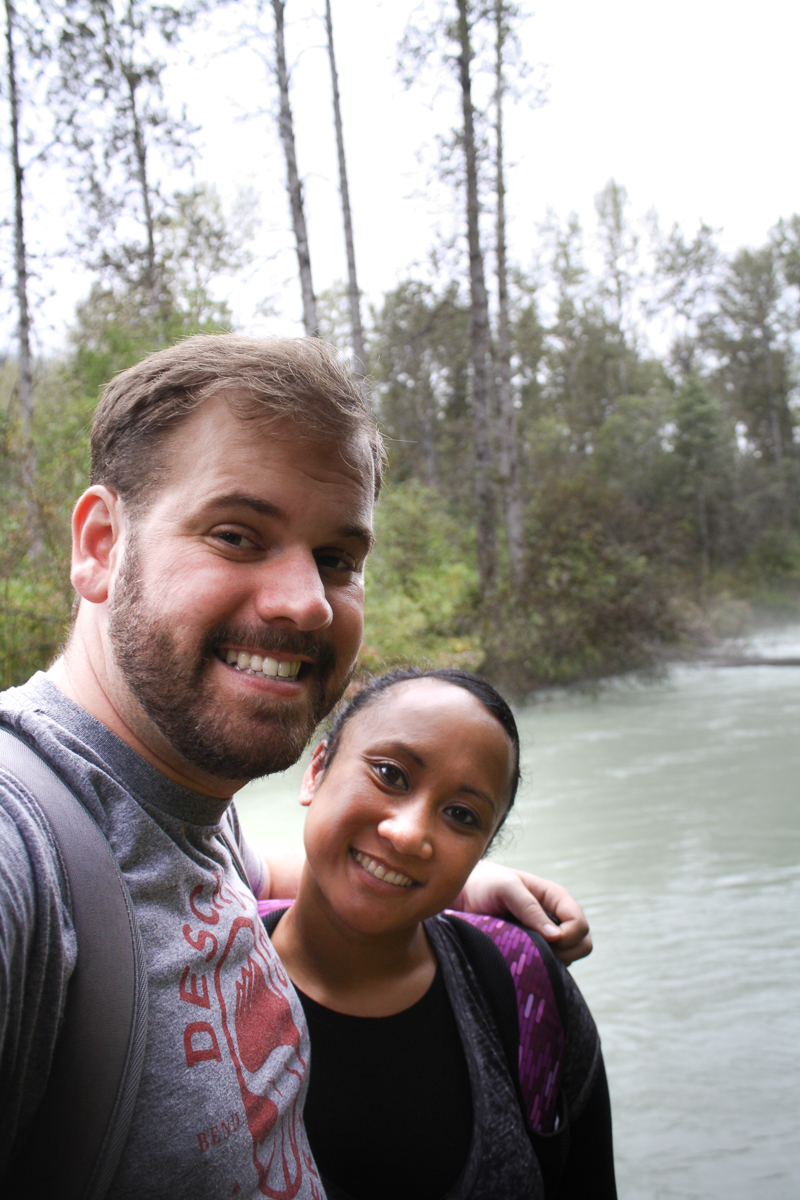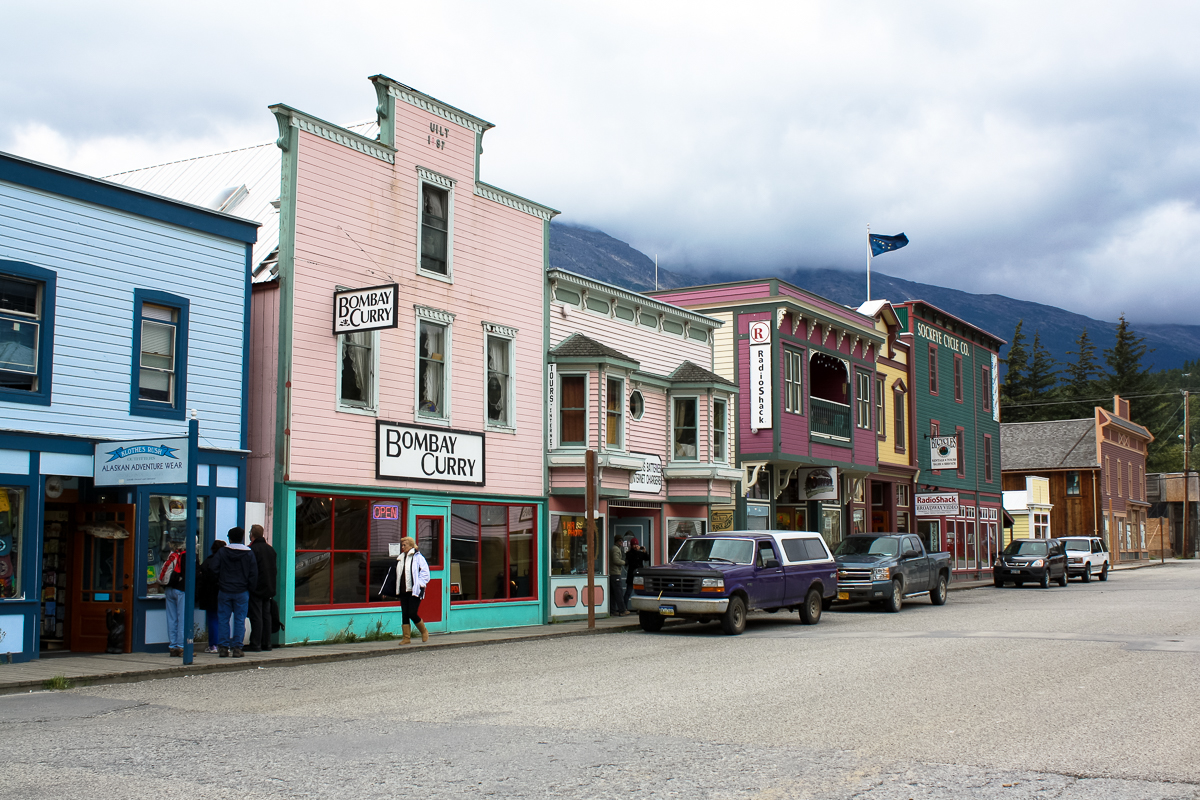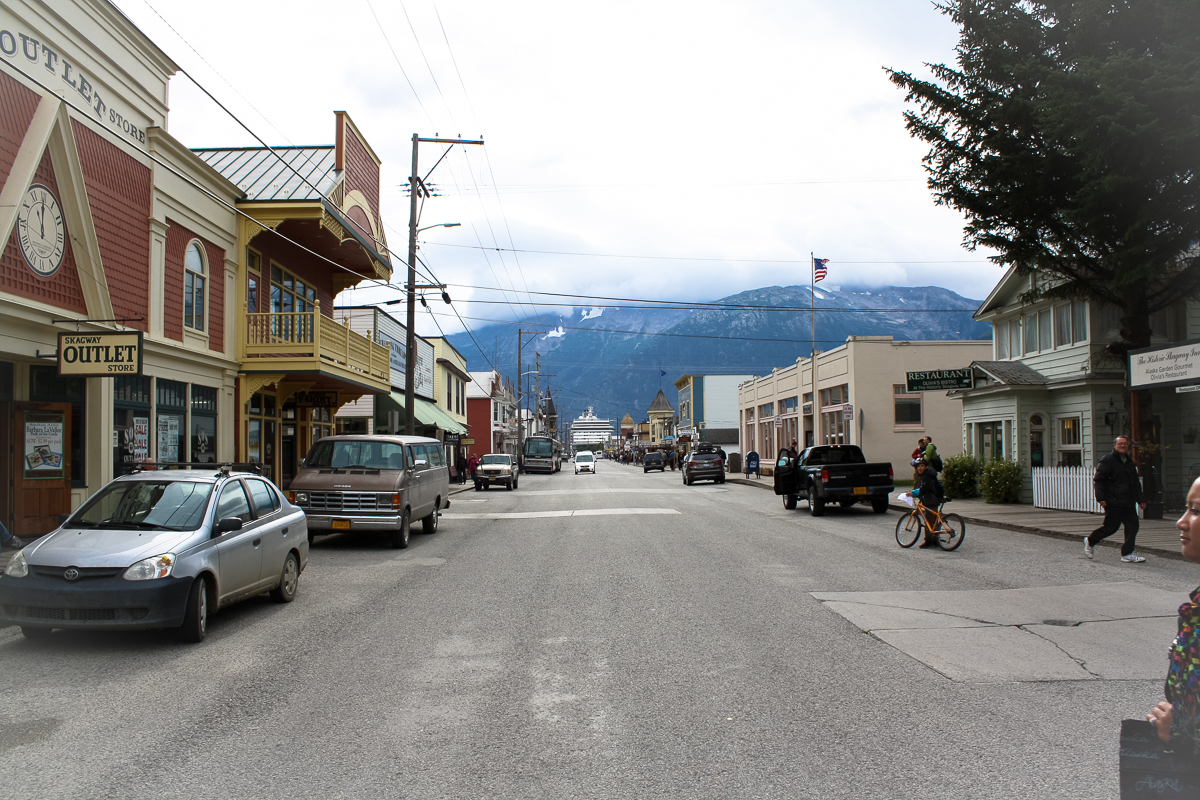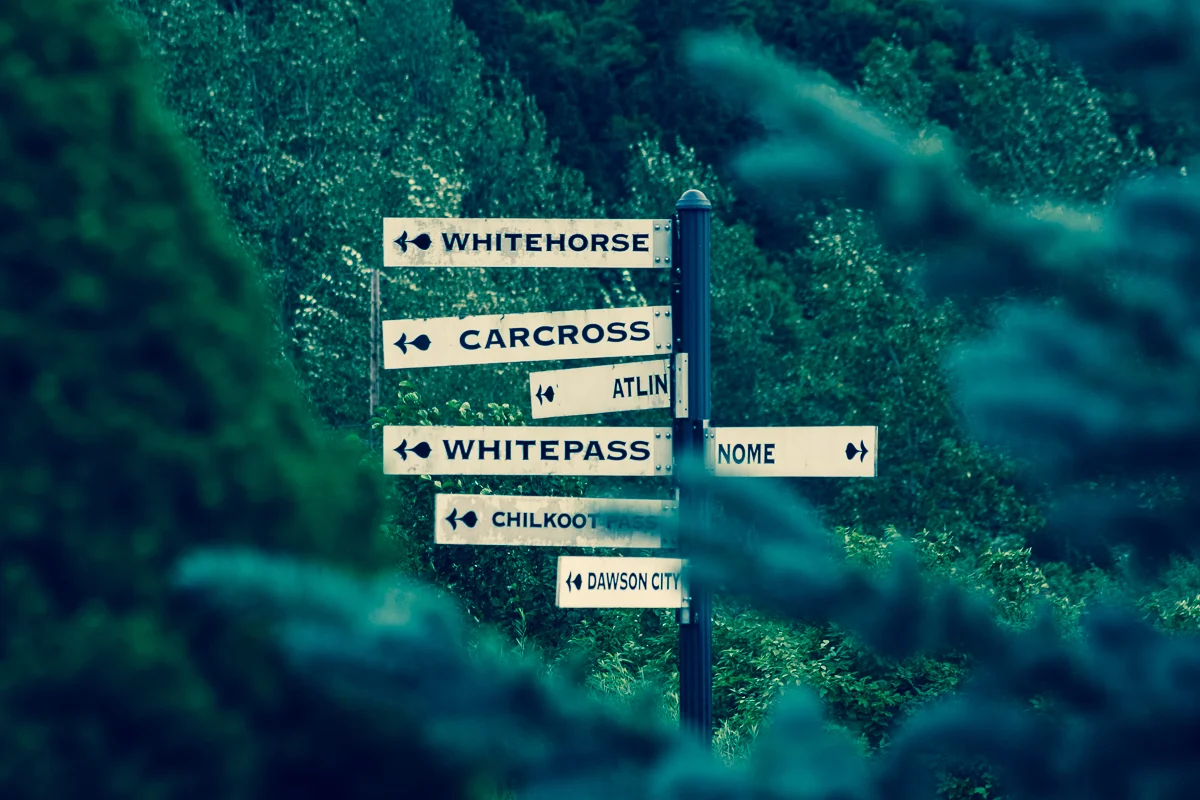Skagway, Alaska is a small town in the northern stretch of the Alaskan Panhandle. The town popped up overnight at the end of the 19th century when it became the obvious gateway to the goldfields of the Klondike Gold Rush, supporting the prospectors who came in droves. Today, the town has been refurbished to a degree of its frontier-self and is almost entirely tourism driven, serving as a port-of-call for numerous cruise lines unloading curious travelers (which is how we arrived to Skagway).
Of all the ports-of-call on our cruise, Skagway was the one I was most excited for. From the perspective of a pre-vacation researcher, it felt the most authentic and experience-rich. Even though I walked away feeling like Skagway was a tacky Frontier-land tourist trap, I was still very happy with our visit.
In the era of the gold rush, Skagway competed with a town two-inlets over named Dyea for serving as an arrival port and trailhead for prospectors looking to reach the Canadian goldfields. Eventually, a narrow-gauge railway would be built from Skagway to the Yukon making travel dramatically easier than the trails. Converted to tourism-use, today this White Pass and Yukon Route Railroad is the most popular tourist attraction in town. Almost every cruise ship excursion included some trip on the railroad as a part of a package deal.
Though pledging stunning views from a relaxing steam train, most of these "deals" cost $100-200 so we opted to pass on the experience, instead choosing to hike on the "Chilkoot Trail". In addition to being cheaper, we liked the idea of doing something "outdoorsy" and "athletic" after spending the last three days lounging and eating inside of a ship. Not knowing much about what we had signed up for, we disembarked from our ship and met a guide in the port's parking lot. Joined by two other couples, we were soon off in a van on a dirt road etched into the side of the inlets, winding with each roll of the hills. We were headed for Dyea (or rather, the location formerly known as Dyea as it doesn't exist anymore) to reach the trailhead.
On the way, our guide pulled into a turnout after noticing a bald eagle nesting in a tree. We all got out and took turns snapping photos. It was the closest I have ever been to one of these creatures and I was amazed to see one in the wild. Knowing the tourist-train couldn't pull over for pictures, I immediately felt as though we made the better decision.
Our first Bald Eagle was glorious, majestic, and looked just as 'Murrican as you could ever want. One of the most impressive birds I have ever seen.
After 30 minutes of driving, we reached the trailhead of the Chilkoot Trail and after rotating through potty-breaks, we were off, unsure of what to expect.
An old photo of men queuing through a pass on the Chilkoot Trail.
The Chilkoot Trail is an old Klondike Gold Rush trail spanning 33 miles from an ocean inlet, across the top of the Alaskan Panhandle, and into Canada for access to the Yukon goldfields. Our guide told stories of ambitious and desperate men hiking the trail nine times in order to transport the one ton of supplies required to sustain oneself in this environment. Still, it was an alternative way to get to the goldfields for those past prospectors, just as it was the alternative excursion for us tourists today. The trail begins relatively flat through coastal rainforests before rapidly ascending up the Chilkoot Pass in alpine-conditions towards Canada. Luckily for us, we were only intending to hike the relatively easy first 2 miles and then float along the Taiya River back to the trailhead.
The first mile of the hike was a rocky trail cut into the side of the mountain. The path was eclipsed by trees and surrounded by mosses, bushes, and fungi, which our guide was eager to point out. It was the most dense forest I have ever walked though, saturated everywhere with water and life. I can't stress how tremendously green everything was, something I appreciate even more looking back at photos as at the time, I was working up a sweat. I mean, the hike wasn't "mountaineering" strenuous but it was "I'm not going to talk for the next 10 minutes so I can catch my breath" strenuous. When we did talk, it was to ask our guide a question or make small talk with the others from our cruise ship. We tended to stick with our guide as one couple was quiet and reserved while the other couple opened up about having sex in a Kohl's dressing room within 5 minutes of meeting us! Still, everybody was nice and suited for the moderate physical activity.
At one point on the hike, our guide pointed out wild cranberries growing along the trail. When asked if they were edible, he remarked that they were but not particularly enjoyable. We wanted to go full-experience and decided to take the chance. The first bite punches you with an overwhelming tartness but within a few seconds it fades and you're left with the familiar pucker-inducing cranberry flavor.
It was also at this point that the trail emerged from the hillside and spanned for long, flat stretches adjacent to the riverbed. If it weren't for the mud, this next mile of trail would hardly have been a "hike".
After crossing a small off-shoot of the Taiya River, we walked across a small island until reaching a beach with an inflatable boat pre-staged and tied to a tree. The raft was yellow, 13 feet long, and had storage boxes containing life vests and water-tight boots for us. We took turns suiting up and after receiving a quick river-safety lesson we stored our valuables in the seats and were off.
Now this wasn't rafting but rather a slow float down a calm river. And to be honest, with the cool temperatures, I very much preferred that! We sat along the inflated sides of the boat while our guide was perched in the middle and used two oars to steer clear of any downed trees and roots. The trip was peaceful, beautiful, and relaxing. Our guide kept an eye out for wildlife and pitched in trivia as it came but we mostly enjoyed the float for the serene transportation it provided. In just 15 minutes we glided past the forested walls we just spent over an hour hiking along. I am all for a hike, any day, but this was clearly the way to travel.
Our guide was even nice enough to let us take a photo with him.
When we arrived on another small beach, beyond the trailhead where our journey began, a second tour guide was waiting for us to help with our disembarkation. The guys in our group helped the guides carry the raft up to a trailer for deflating while the ladies in our group got a head-start on removing their boots and grabbing some cookies and cold tea. The group shared a quiet consensus that while rest was well-earned, it was best done in the heated van back to Skagway, and so we were soon off.
On the journey back, I took a quick time-lapse of our drive along a windy dirt road carved into the wall of the inlet. It's short but captures the essence of our drive in-and-out of the Klondike Gold Rush National Historic Park. I kind of like it!
And with that, the first-half of our day was complete. We were dropped off at our cruise ship and cleaned up a bit before choosing to head out and "explore" the town of Skagway.
When we finally arrived in Skagway, we didn't exactly know what to expect. After walking around for about 5 minutes, we realized that there wasn't much to the town, other than shopping. All and all, it began to feel like a semi-authentic, glorified mall. Perhaps common knowledge to those who regularly cruise, there wasn't much to our ports-of-call beyond the same magnet, t-shirt, Ulu knife, jewelry selling, tourist-trap souvenir shops. At least the buildings in Skagway appeared to be from the 19th century.
One example of the town using a guise of authenticity to package its stores in was the occasional "free museum" we would encounter—from the outside, an old, rustic building would appear to house a collection of artifacts from the town's past when in reality, the museum was just a cover for another antique shop.
Despite the immediately apparent lack of things to do without paying for one-room tours or buying merchandise, we managed to enjoy our stroll through town, soaking in the sights.
Soon enough however, it was time to return to the ship to enjoy a few beers with my brother and play the meanest game of mega-sized Jenga before dinner.
The northern wind coming off of the inlet was tremendously strong. Of course, I may have exaggerated a little bit when posing for this photo, much to the confusion of those around me.
Ultimately, the town services the same function it has for over 100 years—it serves as a supply-post for travelers on their way to other, more adventurous passages. Except, instead of selling mining supplies and food stock, the town is selling magnets and jewelry. Either way, Skagway was an enjoyable first port on our "wedding cruise" and a great opportunity to relive history in an active way.
For more photos of Skagway, Alaska and our hike on the Chilkoot Trail, please check out the gallery below:










































